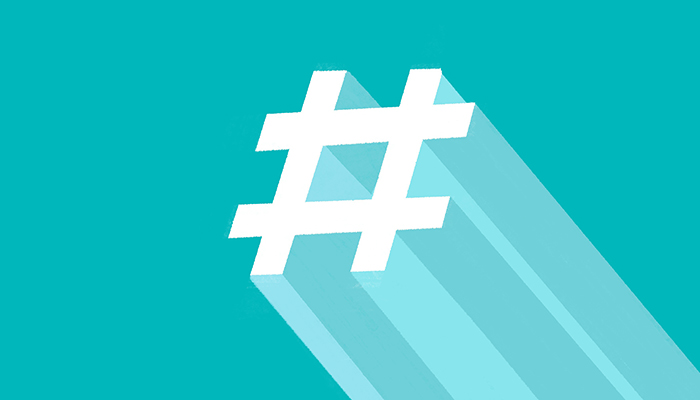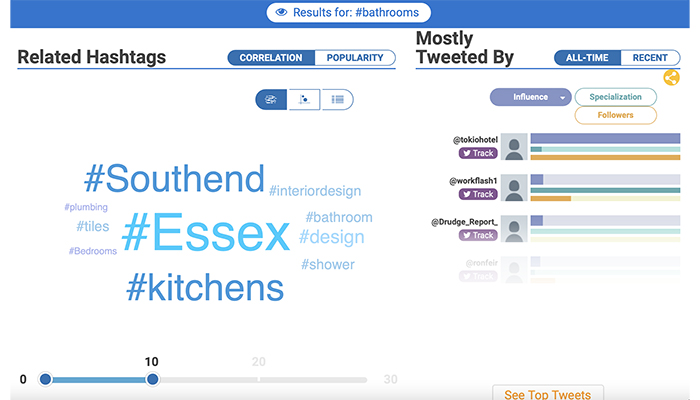Expert view: How to win at hashtags – and avoid making a hash of them
Fri 18th Jun 2021 by Katrina Bell

Expert view: How to win at hashtags – and avoid making a hash of them
The now ubiquitous hashtag has become part of social networks’ algorithmic DNA, however a little extra knowledge can not only amp up your engagement levels, but also save you some blushes along the way, says our web expert Katrina Bell.
The hashtag had a pretty low-key start, when Twitter user #1186 Chris Messina suggested using the metadata tag to organise users into easily searched groups. The beauty of it lay in its streamlined characteristics, that could be easily imputed on mobile devices quickly. Twitter famously deemed it too 'nerdy' but the rest is history. Fast forward to 2021 and there isn’t a social network that doesn’t make use of hashtags in some form, however the real challenge is categorising where they will have the most impact, and how to curate your own hashtag habits to fit the platform.
A great place to start is a blank spreadsheet where you can categorise your parent tags from which you can begin your research on the platforms that are most valuable to you. These can be campaign-specific tags, brand-related, or aimed at target groups, special events or trending topics. Paid for tools such as Hashtagify.me or Hootsuite can help to assess the relative strength and weakness of your tags, although you will need to get deep into the settings to ensure you are not being offered up global or North American results, which would preclude you also incorporating a local or regional group of tags periodically.
Social media marketing practitioner Richard Duke has some cautionary tales for companies that dip their toes into creating hashtags without some serious consideration.
“Brands large and small have fallen prey to snarky – or even malicious – Twitter users who have hijacked seemingly innocuous tags into a #bashtag,” says Richard. “If you can find a way to reinterpret your abbreviation or context, you can be very sure the Internet is way ahead of you. Many of them are too rude to quote, however I always remember with a cringe McDonalds’ #McDStories, which had to be pulled in only two hours.” (The brand had hoped for some heartwarming on-brand story sharing, but Twitter had other ideas and soon dished up plenty of toe-curling horror stories instead.)
Richard agrees that having a one-size-fits-all approach can be counterproductive: “Using excessive hashtags on any platform is suspect, but on Facebook, in particular, are seen as unhelpful visual clutter or even spammy as the average users believe they have no effect on usability, which is not strictly true because you can search by hashtag.”
So how many is too many, and how does each social platform use them to categorise content? Unsurprisingly paid for accounts will give you greater understanding of your interactions.
Instagram and hashtags are synonymous because you can follow hashtags. You can use up to 30 but this is likely to be off-putting to readers on mobile screens as a long list becomes unreadable. Instagram Business puts several helpful tools at your fingertips, specifically Instagram Insights, which will tell you exactly which of your hashtags provoked the most engagement. Related hashtags are a way of broadening your reach while still maintaining a curated collection – you don’t want to come off as being ‘spammy’. Don’t use more than seven.
Video channel YouTube actively dissuades content creators from using too many, and may even sandbox your video if you go overboard – about three should do it.
LinkedIn works very much like Twitter’s algorithm, so you can see how other hashtags are behaving on the platform and you can follow hashtags. Two is more than enough as business-to-business communications have a natural aversion to overcooking your content with unrelated marketing tactics.
Pinterest for Business is mostly a channel for the platform to get brands and creators to buy ad space. Hashtags are the primary way the platform organises pins. A paid-for account will give you the kind of granular insights so you can easily see who is interacting with your content and how. According to Pinterest, 97% of its top searches are unbranded, so it’s a relatively fresh field for brands to explore.
Confusingly, considering how important hashtags are to Twitter’s algorithm for pumping stories into the Explore and Trending sections, you can’t follow hashtags, only topics.
News reports in early May this year suggested the platform is about to launch a potentially tied subscription service, tentatively called Twitter Blue, but so far there is nothing concrete to suggest a paid-for account will finally allow users to follow particular hashtags. Up to three hashtags is a wise approach as you want your communications to be short and snappy.

Tags: insight, features, hashtags, social media, online, richard duke, chris messina
Sign up to our newsletter
Crown Imperial – 5 ‘must have’ kitchen trends for 2026
Sun 21st Dec 2025


























